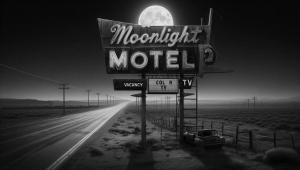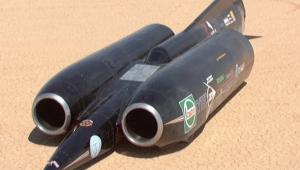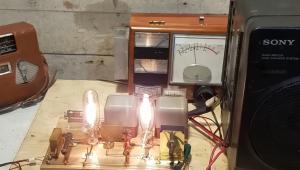Good Vibrations

So you’re a committed audiophile. You used a laser to precisely toe in your front loudspeakers. You lie awake at night worrying about that 2-dB dip at 9 kHz in your room’s frequency response. You hire Mike Mettler to hand-deliver every issue of S+V. [I aim to please —Ed.] Well, that’s great. But don’t ignore all the other sounds around you that also deserve your obsessive attention.
Increasingly, companies are tuning into sound quality for products that you normally wouldn’t associate with high fidelity. The click of a lipstick tube, the pop when opening a bottle of Snapple, the roar of a lawn mower — you name it, and companies are working to make sure it sounds just so.
When a product makes a sound, we invariably (and usually unconsciously) equate sound quality with product quality. Audio engineer Richard Lyon surveyed 23,000 words in the English language and identified about 1,300 that pertain to sound and about 400 that directly describe sound. Words like bassy, boomy, and bright are familiar ?to audiophiles. But other words like grating, grinding, and groaning are also applicable to many products.
We use sound to form our opinion of a product’s power, reliability, effectiveness, and overall performance. Listen to a vacuum cleaner; you’ll immediately decide whether or not it’s junk. Does the latch on your laptop sound secure or mushy? Does your blender sound powerful or whiny? Heaven forbid that your desk lamp doesn’t switch on with a reassuringly solid click. And let’s not even contemplate the horror of a toilet with an unpersuasive flushing sound.
Car makers are very sound-obsessed. I’ve spent a good deal of my career tuning the sound systems of prototype vehicles to ensure that the sound systems deliver optimal music fidelity. But occasionally my work spills into the vehicle’s distinctly nonmusical sounds. The sound a car door makes when it shuts is a big deal for car companies. Low- pitched and damped = good. High-pitched and ringing = extremely bad. In fact, I’ll bet any amount of money on the following: Blindfolded, I can tell you which of two cars is more expensive just by slamming their doors.
The other big deal is the sound of a vehicle’s exhaust system. A luxury car has to be quiet, because that conveys sophistication and, well, luxury. The opposite is true in sports cars. A performance car that sounds wimpy is absolutely doomed in the marketplace. Some car makers have libraries of exhaust sounds, and carefully tune their new vehicles to get just the right note of power and aggression. In the McLaren Spider, seen above, acoustic tubing runs from the engine to the passenger compartment, and you can choose different levels of “aural drama.”
It’s so important for a car to sound “right” that sometimes it’s faked. Some cool cars don’t sound awesome enough, so Hollywood filmmakers routinely replace the sound of the onscreen car with another, better car sound. Car nuts chuckle when they see a film with a non-muscle car driving by with a muscle-car sound effect.
Motorcycle sounds are a big deal too. In 1994, Harley-Davidson attempted to register a trademark for the bike’s iconic sound, declaring, “The mark consists of the exhaust sound of applicant’s motorcycles, produced by V-twin, common crankpin motorcycle engines when the goods are in use.” Competitors objected, and after 6 years in the courts, Harley gave up. Still, the sound of a hog is unmistakably linked to the brand. Visualize a tough biker in black leather, and imagine the whiny sound of a moped –– that’s a world-class non sequitur.
Thus informed, start listening to everyday sounds. You might be surprised at how sounds can differentiate products, and how a “quality” product often has a “quality” sound. Just don’t let that task overload the obsessive-compulsive audiophile thing you have going. That squeak in your therapist’s chair might drive you crazy.
- Log in or register to post comments






























































